
Understanding Its Roots, Diversity, and Global Influence – What Is Gay Culture?
What is gay culture? Gay culture, often seen as a subset of LGBTQ+ culture, encompasses the social practices, arts, behaviors, and norms associated with the gay community. While it’s rooted in a shared identity of same-sex attraction, gay culture has blossomed into a rich tapestry of traditions, artistic expressions, activism, and values. But what is gay culture beyond its most visible expressions? It is a celebration of individuality, a response to societal challenges, and a vehicle for change in both LGBTQ+ and mainstream communities.
In this blog, we will take a deep dive into what is gay culture, exploring its history, its various elements, its influence on mainstream culture, and why understanding it is crucial in today’s world. We will also discuss the challenges the gay community faces and how the culture continues to evolve in the face of these challenges.
The History of Gay Culture: Where It All Began
To answer the question “What is gay culture?”, it’s important to understand where it all started. Gay culture has a long and often hidden history, rooted in the experiences of LGBTQ+ individuals throughout the centuries. In many parts of the world, same-sex relationships were either hidden or outright illegal for much of history, forcing gay culture to develop in secret.
Historically, many LGBTQ+ individuals gathered in clandestine spaces, such as bars, clubs, and private homes, where they could safely express themselves. These early gatherings were the birthplace of what we now recognize as gay culture. For example, what is gay culture without the significance of the Stonewall Riots in 1969? This pivotal event marked the beginning of the modern LGBTQ+ rights movement in the United States and became a cornerstone of gay pride and culture.
In the early 20th century, certain urban areas became havens for LGBTQ+ individuals, such as the Greenwich Village neighborhood in New York City or Berlin’s vibrant LGBTQ+ scene during the Weimar Republic. These spaces allowed for the development of a unique set of cultural norms, language, and practices that reflected the shared experiences of the community.

What Is Gay Culture? A Multifaceted Identity
So, what is gay culture today? It is a multifaceted identity that includes many different elements, from fashion and language to art, music, and political activism. At its core, gay culture is about self-expression and embracing one’s identity. It’s about celebrating diversity and pushing back against the norms and expectations that have traditionally been imposed on LGBTQ+ people.
Some of the key elements that define what is gay culture include:
- Art and Fashion: Gay culture has long been associated with bold artistic expression, particularly in the realms of fashion, visual arts, and performance. Designers like Alexander McQueen and Jean-Paul Gaultier have drawn inspiration from LGBTQ+ culture to create iconic fashion statements. Drag culture, which has its roots in gay subcultures, is a key example of how performance art intersects with identity in gay culture.
- Language: Gay culture has developed its own lexicon, from slang terms like “fierce” and “shade” to phrases that are unique to the LGBTQ+ experience. The term “gaydar,” for instance, refers to a person’s supposed ability to detect if someone is gay. The rise of online LGBTQ+ communities has also played a role in developing and spreading this unique language.
- Music and Dance: What is gay culture without its connection to music and dance? Gay bars and clubs have historically been safe spaces for LGBTQ+ individuals to gather, dance, and enjoy music without fear of judgment. Genres like disco and house music have deep roots in gay culture, and performers like Madonna, Lady Gaga, and RuPaul have long been celebrated as icons in the community.
- Political Activism: Gay culture is inherently tied to political activism. From the early days of fighting for the decriminalization of homosexuality to the battle for marriage equality, LGBTQ+ individuals have long fought for their rights. The gay pride flag, created by Gilbert Baker in 1978, remains one of the most powerful symbols of this activism.
Advertisement · Scroll to continue
Recommended
Gay Subcultures: Exploring the Diversity Within Gay Culture
What is gay culture without its diversity? While there are shared elements across the gay community, there are also distinct subcultures that contribute to the richness of gay culture. Each subculture has its own traditions, norms, and expressions that reflect different aspects of LGBTQ+ identity.
Here are some of the most prominent subcultures within gay culture:
- The Bear Community: The bear community is made up of gay men who identify with a more rugged, masculine aesthetic, often characterized by body hair and larger builds. Bears celebrate body positivity and challenge traditional norms of what a “gay man” should look like.
- Drag Culture: Drag queens have long been at the heart of gay culture. Drag culture is about breaking gender norms through the art of performance. Shows like RuPaul’s Drag Race have brought drag into the mainstream, but drag performances have been a staple of gay bars and clubs for decades.
- Leather and BDSM: The leather community is a subculture within gay culture that focuses on leather clothing and accessories, as well as BDSM practices. It’s a community that embraces sexual freedom and is known for its tight-knit social networks and gatherings like leather pride events.
- Twinks and Twunks: In gay culture, “twink” refers to young, slender, and typically smooth-skinned gay men, often with a youthful, boyish appearance. Twinks are sometimes contrasted with “twunks,” who share similar qualities but have more muscle mass. These terms have been popularized in gay slang and are used to describe different physical archetypes within the community.
- Ballroom Culture: Emerging from the Black and Latinx LGBTQ+ communities in Harlem, ballroom culture is centered around competitive events where individuals “walk” in different categories, such as runway, fashion, or performance. This culture gave rise to “voguing,” a highly stylized form of dance that was brought into the mainstream by Madonna’s 1990 hit “Vogue.”
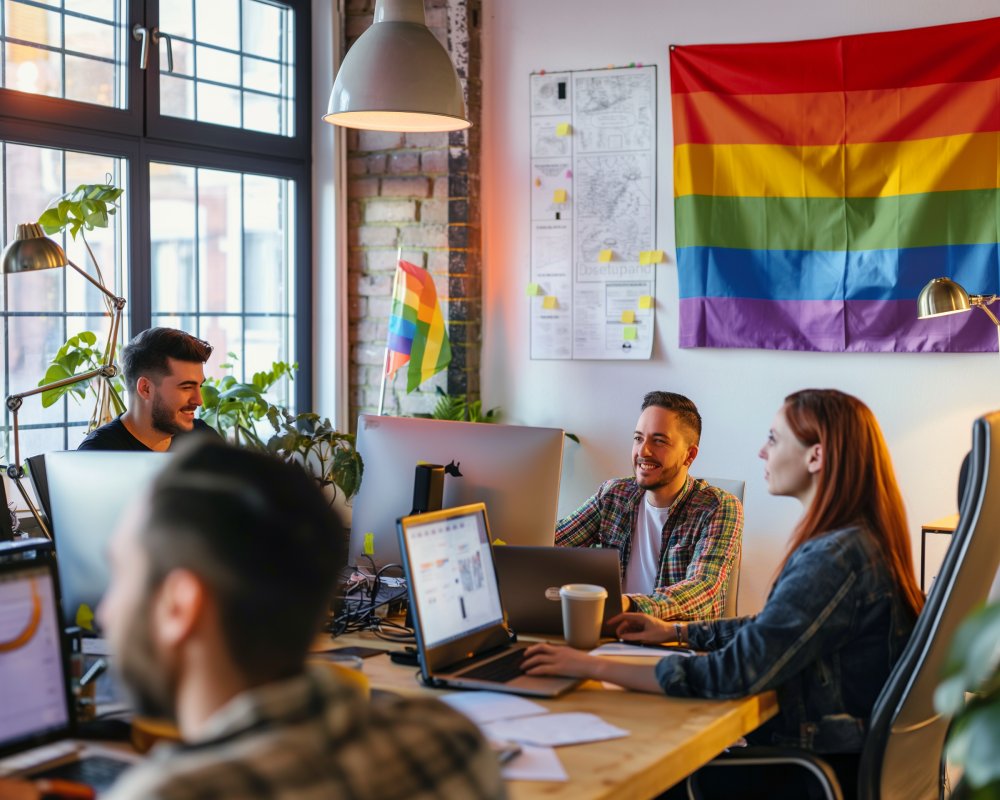
The Influence of Gay Culture on Mainstream Society
What is gay culture without acknowledging its significant influence on mainstream society? Gay culture has made a substantial impact on art, fashion, music, and even social norms. Many elements that originated in gay subcultures have been adopted and celebrated by mainstream society.
- Fashion and Aesthetics: Many fashion trends have their origins in gay culture, with designers like Tom Ford and Marc Jacobs leading the charge in bringing LGBTQ+ sensibilities to the runway. Bold colors, gender-fluid designs, and avant-garde aesthetics that were once exclusive to gay culture are now celebrated by fashion lovers of all orientations.
- Entertainment and Pop Culture: Gay culture has also made a huge impact on entertainment, with TV shows like Queer Eye, Pose, and Will & Grace bringing LGBTQ+ stories to mainstream audiences. These shows have helped normalize same-sex relationships, gender fluidity, and other aspects of LGBTQ+ life.
- LGBTQ+ Language in Pop Culture: Words and phrases that originated in LGBTQ+ spaces, particularly drag culture, have made their way into everyday conversations. Terms like “yas queen,” “slay,” and “spill the tea” have transcended their origins and become part of popular vernacular, thanks in part to platforms like RuPaul’s Drag Race.
- Marriage Equality and Legal Rights: The fight for marriage equality, led by activists within the gay community, has reshaped the legal landscape around the world. Gay culture’s influence on politics has led to significant advancements in LGBTQ+ rights, including the legalization of same-sex marriage in multiple countries.
Challenges Facing Gay Culture Today
Even as gay culture continues to thrive and influence mainstream society, the community still faces significant challenges. So, what is gay culture in the face of ongoing struggles for equality, recognition, and safety?
- Discrimination and Homophobia: Despite growing acceptance, LGBTQ+ individuals still face discrimination and homophobia, both in everyday life and in the workplace. Many gay people experience microaggressions or are outright denied opportunities because of their sexual orientation.
- Legal Setbacks: While marriage equality has been achieved in many places, there are still countries where being gay is illegal, and LGBTQ+ individuals face persecution. Some countries have even seen a rollback of LGBTQ+ rights, prompting concern about the future of gay culture in these regions.
- HIV/AIDS Stigma: The HIV/AIDS epidemic had a profound impact on the gay community in the 1980s and 1990s, and while medical advancements have greatly improved the outlook for those living with HIV, the stigma surrounding the virus persists. This stigma disproportionately affects gay men, contributing to social and psychological challenges within the community.
- Transphobia and Intersectionality: Within the broader LGBTQ+ umbrella, the gay community must also contend with issues of intersectionality. Transphobia, racism, and other forms of discrimination within the community itself can create divisions and challenges. Addressing these internal issues is crucial for fostering inclusivity and unity within gay culture.
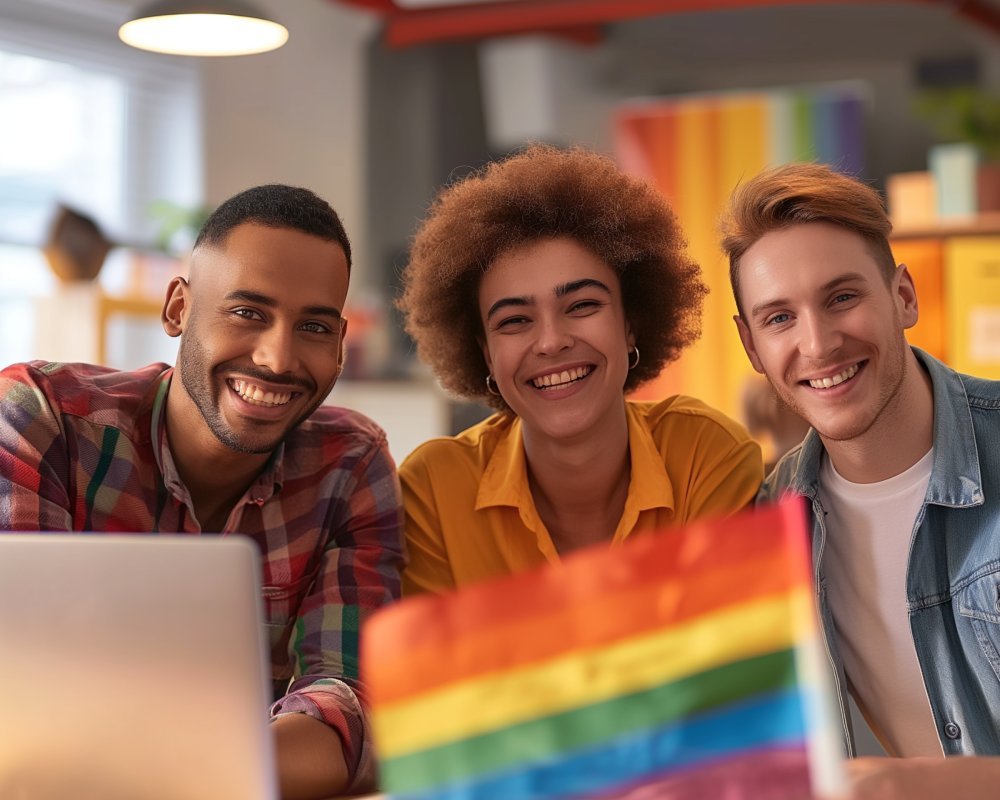
Advertisement · Scroll to continue
Recommended
What Is Gay Culture in the Digital Age?
The rise of the internet and social media has profoundly shaped what is gay culture in the modern era. Platforms like Instagram, TikTok, and Twitter have allowed LGBTQ+ individuals to connect with one another, share their stories, and build communities regardless of geographic location.
- Online Communities: The internet has made it easier for LGBTQ+ people to find support and friendship through online communities. Websites, blogs, and social media groups dedicated to LGBTQ+ issues offer safe spaces for individuals to express themselves and connect with like-minded people.
- Dating Apps: Gay dating apps like Grindr, Scruff, and HER have become integral parts of gay culture, offering a way for LGBTQ+ individuals to meet potential romantic or sexual partners. These apps have expanded the possibilities for connection and relationships within the community.
- Digital Activism: Social media has also become a powerful tool for LGBTQ+ activism. Hashtags like #Pride and #LoveIsLove have been used to raise awareness about LGBTQ+ rights and amplify the voices of activists. Online campaigns have played a crucial role in driving political and social change.
The Future of Gay Culture: What Lies Ahead?
What is gay culture’s future? As society continues to evolve and become more accepting, the future of gay culture will undoubtedly be shaped by ongoing struggles for equality, the increasing visibility of LGBTQ+ individuals, and the challenges presented by political and social forces.
- Globalization of Gay Culture: As gay culture continues to spread across the world, particularly through digital media, it will likely become more globalized. However, this also raises questions about the preservation of regional LGBTQ+ traditions and the risk of homogenization.
- Increased Representation: The increasing representation of LGBTQ+ people in politics, entertainment, and media suggests that gay culture will continue to gain visibility. More diverse voices will likely emerge, contributing to a richer and more inclusive understanding of what it means to be gay.
- Ongoing Struggles for Rights: While progress has been made in many countries, LGBTQ+ rights remain a pressing issue in others. The fight for equality will continue, and gay culture will remain an important vehicle for activism and change.
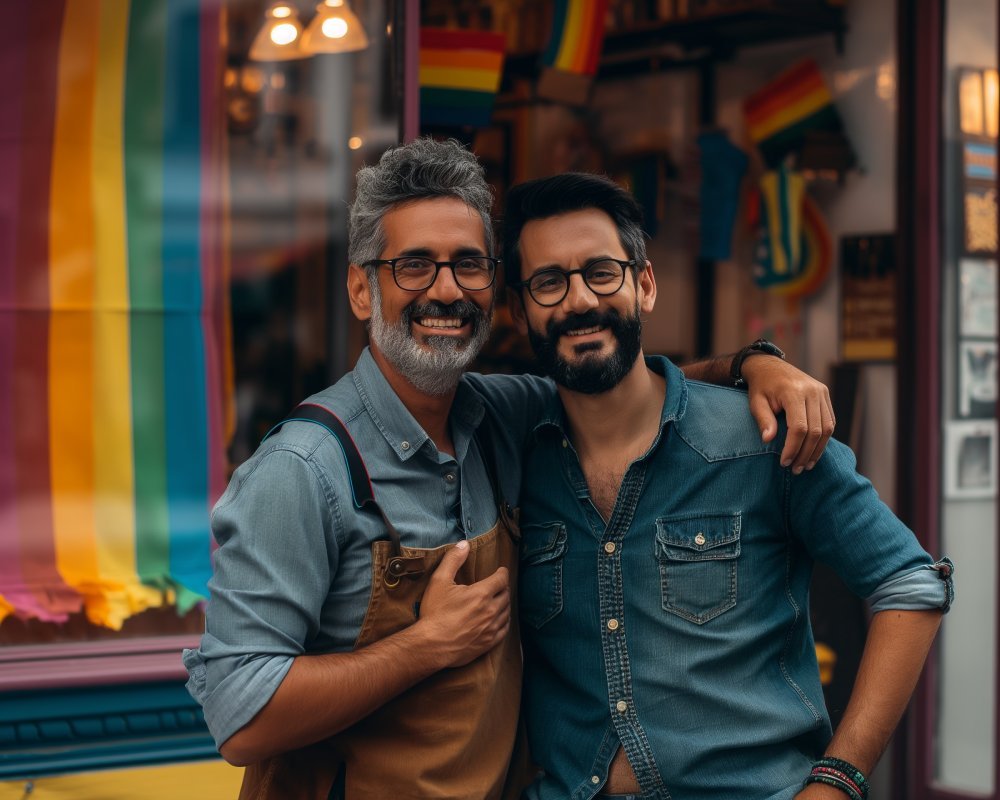
Interesting Facts About Gay Culture
- The Stonewall Riots: The Stonewall Riots, which occurred in June 1969, are considered the birth of the modern LGBTQ+ rights movement and have had a lasting impact on gay culture.
- The Rainbow Flag: Created by artist Gilbert Baker in 1978, the rainbow flag has become an iconic symbol of LGBTQ+ pride and is a key part of gay culture.
- Voguing: Voguing, a dance style that originated in Harlem’s ballroom scene, became a global phenomenon after Madonna’s hit song “Vogue” and is now a celebrated part of LGBTQ+ culture.
- Gay Language: Terms like “reading” and “throwing shade” originated in LGBTQ+ subcultures and are now widely used in mainstream culture, thanks in part to RuPaul’s Drag Race.
- Drag Shows: Drag performances have been a staple of gay culture for decades, and today’s drag queens have gained international fame, with performers like Bianca Del Rio and Trixie Mattel becoming household names.
- Marriage Equality: Gay culture played a major role in the fight for marriage equality, which has been achieved in over 30 countries.
- Pride Parades: Gay pride parades are held in cities all over the world and are a key celebration of LGBTQ+ culture, bringing together millions of people each year.
- Bear Subculture: The bear community, a subculture within gay culture, celebrates body positivity and challenges traditional norms of beauty within the LGBTQ+ community.
- The AIDS Crisis: The HIV/AIDS epidemic of the 1980s had a profound impact on gay culture and led to increased activism within the LGBTQ+ community.
- LGBTQ+ Literature: LGBTQ+ authors like James Baldwin, Audre Lorde, and David Sedaris have played a crucial role in shaping gay culture through their literary works.
- Drag Balls: The ballroom culture that emerged from the Black and Latinx LGBTQ+ communities in Harlem has had a lasting impact on gay culture and continues to influence fashion, music, and dance today.
- Gay Icons: Gay culture has long embraced icons like Judy Garland, Cher, and Madonna, whose music and personas have resonated with the LGBTQ+ community.
- Same-Sex Relationships in History: Same-sex relationships have existed throughout history, from ancient Greece to the modern day, influencing the development of gay culture.
- LGBTQ+ Bars: Gay bars have been historically important as safe spaces for LGBTQ+ individuals to gather and express themselves freely.
- House Music: House music, which originated in Chicago’s gay clubs, became a cornerstone of gay culture and is now a global genre.
- Lesbian Culture: Lesbian subcultures within gay culture have their own distinct traditions, including the emergence of “butch” and “femme” identities.
- The Drag Mother: In gay culture, drag queens often mentor younger queens in a relationship known as the “drag mother,” passing down traditions and performance techniques.
- Influence on Advertising: Major brands like Nike, Apple, and Coca-Cola have embraced gay culture by featuring LGBTQ+ individuals in their marketing campaigns.
- LGBTQ+ Celebrities: Celebrities like Ellen DeGeneres, Neil Patrick Harris, and Lil Nas X have become prominent representatives of gay culture in mainstream media.
- Gay Bathhouses: Historically, gay bathhouses were one of the few places where LGBTQ+ individuals could meet and express their sexuality openly, particularly in the pre-AIDS era.
- Queer Theory: Queer theory, which emerged in academia in the 1990s, has been heavily influenced by gay culture and challenges traditional notions of gender and sexuality.
- Online LGBTQ+ Communities: Platforms like Reddit, Tumblr, and Twitter have allowed LGBTQ+ individuals to connect and form online communities, spreading gay culture across the globe.
- International Pride Celebrations: Pride parades and events are held in countries all around the world, with major celebrations in cities like San Francisco, New York, London, and São Paulo.
- Intersectionality: Gay culture is increasingly recognizing the importance of intersectionality, addressing how race, gender, and other identities intersect with sexual orientation.
- Drag King Culture: While drag queens are more visible in mainstream media, drag kings—female performers who impersonate male characters—are also an important part of gay culture.
- Queer Cinema: LGBTQ+ filmmakers have made significant contributions to cinema, with films like Moonlight, Call Me by Your Name, and Paris Is Burning offering deep insights into gay culture.
- LGBTQ+ Sports Leagues: Many cities have LGBTQ+ sports leagues, providing a space for athletes to connect and compete in an inclusive environment.
- The Role of Allies: Allies—non-LGBTQ+ individuals who support LGBTQ+ rights—play an important role in gay culture, helping to advocate for equality and inclusion.
- Gay Vacation Spots: Cities like Mykonos, Fire Island, and Palm Springs have become popular vacation destinations for LGBTQ+ travelers and are known for their vibrant gay culture.
- Pride Flag Variations: While the rainbow flag is the most well-known symbol of LGBTQ+ pride, there are many variations of the pride flag representing different identities within the community, such as the bisexual and transgender pride flags.
FAQs About What Is Gay Culture
1. What is gay culture?
Gay culture refers to the social practices, arts, language, behaviors, and norms associated with the gay community and is a subset of broader LGBTQ+ culture.
2. How did gay culture begin?
Gay culture began to take shape in secret spaces like bars and clubs where LGBTQ+ individuals could safely express themselves. It was further solidified during key events like the Stonewall Riots of 1969.
3. What is the significance of the Stonewall Riots in gay culture?
The Stonewall Riots are considered the birth of the modern LGBTQ+ rights movement, marking a key moment in the fight for gay rights and culture.
4. How has gay culture influenced fashion?
Gay culture has had a significant impact on fashion, with designers like Tom Ford and Jean-Paul Gaultier drawing inspiration from LGBTQ+ aesthetics and pushing the boundaries of gender norms.
5. What role does music play in gay culture?
Music has always been central to gay culture, with genres like disco and house music originating in LGBTQ+ spaces. Artists like Madonna, Lady Gaga, and RuPaul are gay icons celebrated for their contributions to music and LGBTQ+ rights.

6. How is language important in gay culture?
Language is a key part of gay culture, with many slang terms and phrases originating in the LGBTQ+ community. These include terms like “reading,” “shade,” and “yas queen,” many of which have made their way into mainstream culture.
7. What is drag culture, and how does it fit into gay culture?
Drag culture is a major component of gay culture, with drag queens and kings performing in exaggerated gender roles to entertain and challenge societal norms. Shows like *RuPaul’s Drag Race* have helped bring drag culture into the mainstream.
8. What is voguing in gay culture?
Voguing is a highly stylized dance form that originated in Harlem’s ballroom culture. It became popular in the 1980s and was brought to mainstream attention by Madonna’s song “Vogue.”
9. What is the bear community in gay culture?
The bear community is a subculture within gay culture that celebrates larger, often hairy men who challenge conventional standards of beauty in the LGBTQ+ community.
10. How does gay culture influence mainstream society?
Gay culture has significantly influenced mainstream society, especially in fashion, music, and entertainment. Terms, aesthetics, and behaviors that originated in LGBTQ+ spaces are now widely accepted and celebrated in mainstream culture.
11. How do pride parades fit into gay culture?
Pride parades are one of the most visible expressions of gay culture, celebrating LGBTQ+ identities and advocating for equality and acceptance. They often feature colorful displays, performances, and political messages.
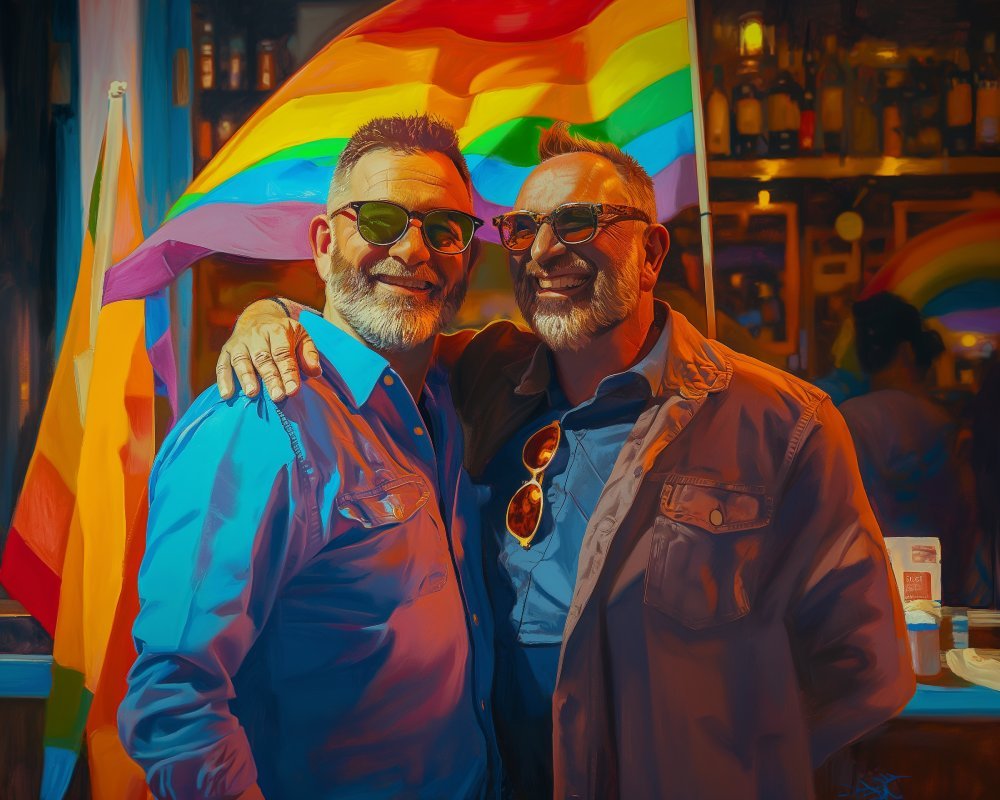
12. How has gay culture contributed to LGBTQ+ rights activism?
Gay culture is inherently tied to LGBTQ+ rights activism, with individuals and communities fighting for legal equality and social acceptance through political movements and public demonstrations.
13. How does intersectionality affect gay culture?
Intersectionality plays a crucial role in gay culture, recognizing that LGBTQ+ individuals have diverse experiences based on factors like race, gender, and socioeconomic status. This awareness helps create a more inclusive and supportive community.
14. What is the impact of HIV/AIDS on gay culture?
The HIV/AIDS epidemic of the 1980s had a profound impact on gay culture, leading to increased activism and the formation of support networks within the LGBTQ+ community.
15. What role do online communities play in gay culture?
Online communities have become an important part of gay culture, allowing LGBTQ+ individuals to connect, share experiences, and find support through social media platforms and dedicated websites.
16. How has gay culture influenced cinema?
Gay culture has made significant contributions to cinema, with films like *Moonlight* and *Paris Is Burning* offering deep insights into LGBTQ+ experiences and challenges.
17. What are drag balls in gay culture?
Drag balls are competitive events where participants “walk” in categories such as fashion and performance. These events are a key part of ballroom culture, which originated in Black and Latinx LGBTQ+ communities.

18. How does gay culture influence advertising?
Many major brands have embraced gay culture in their advertising, featuring LGBTQ+ individuals and symbols like the rainbow flag in their marketing campaigns.
19. What are gay icons, and why are they important in gay culture?
Gay icons are figures in pop culture who resonate with the LGBTQ+ community, often due to their advocacy for LGBTQ+ rights or their embodiment of qualities like resilience, self-expression, and inclusivity. Examples include Cher, Madonna, and Freddie Mercury.
20. How has ballroom culture contributed to gay culture?
Ballroom culture, which emerged from marginalized Black and Latinx LGBTQ+ communities, has contributed significantly to gay culture, particularly through dance forms like voguing and the celebration of individuality and resilience.
21. What is queer theory, and how does it intersect with gay culture?
Queer theory is an academic field that challenges traditional ideas about gender and sexuality. It intersects with gay culture by exploring how LGBTQ+ identities resist societal norms and push boundaries.
22. How does the LGBTQ+ community address discrimination within gay culture?
While gay culture promotes inclusivity, there are still issues of racism, transphobia, and body shaming within the community. Ongoing discussions and activism aim to address these challenges and create a more supportive environment.
23. How does the internet affect the future of gay culture?
The internet has expanded the reach of gay culture, allowing LGBTQ+ individuals to connect globally and share their stories. Social media has also facilitated digital activism and the spread of LGBTQ+ content.
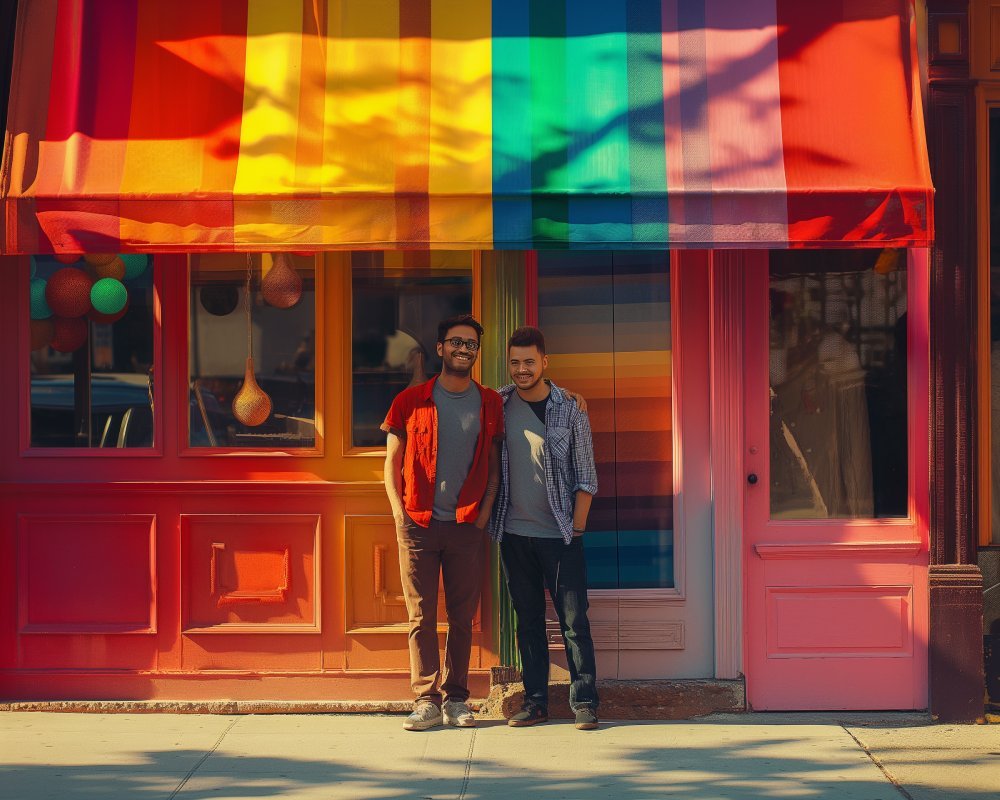
24. What are the challenges facing gay culture today?
Challenges facing gay culture include ongoing discrimination, legal setbacks in certain countries, the rise of conservative movements, and internal issues like racism and transphobia.
25. How does gay culture celebrate body positivity?
Gay culture celebrates body positivity through subcultures like the bear community and by challenging traditional beauty standards. The emphasis is on self-acceptance and embracing diverse body types.
26. How do LGBTQ+ sports leagues contribute to gay culture?
LGBTQ+ sports leagues provide a space for athletes to connect and compete in an inclusive environment, promoting both fitness and community-building within gay culture.
27. How does drag king culture fit into gay culture?
Drag king culture, though less visible than drag queens, is an important part of gay culture. Drag kings challenge traditional gender norms by performing exaggerated masculine characters in a similar way to drag queens.
28. How does gay culture celebrate chosen family?
For many LGBTQ+ individuals, chosen family—friends and community members who provide support and love—are central to gay culture, especially for those who face rejection from biological family members.
29. What is the role of gay bars in gay culture?
Gay bars have historically served as safe spaces for LGBTQ+ individuals to gather, socialize, and express their identities freely. They remain important hubs of community and culture.
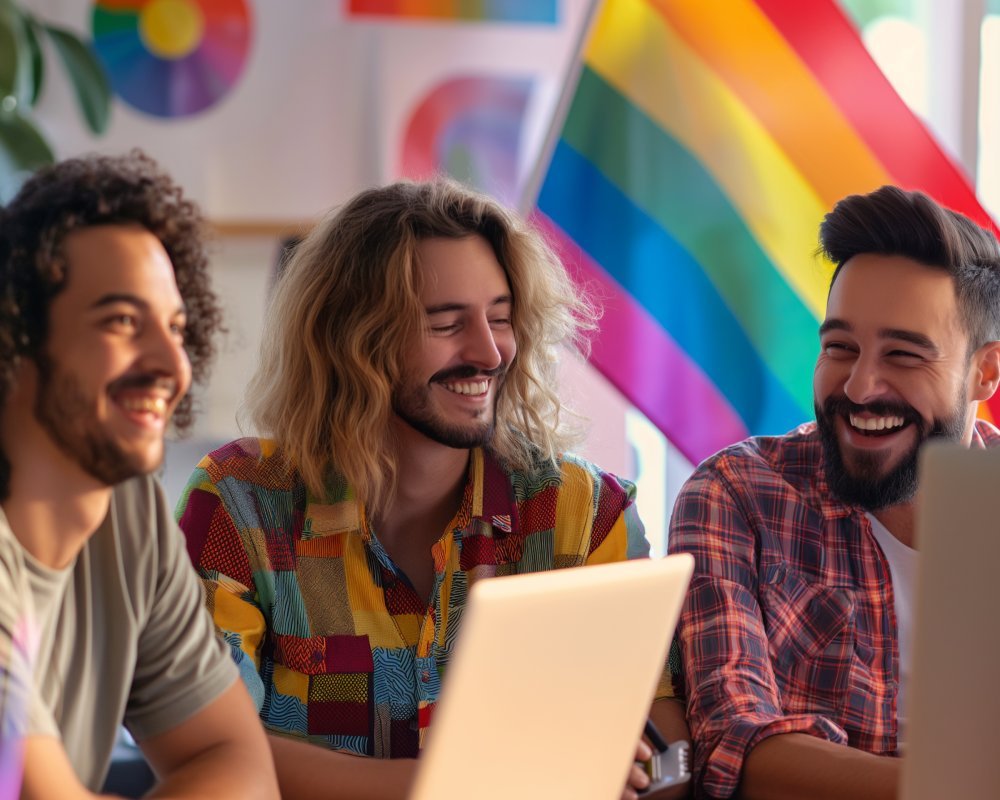
30. What is the future of gay culture?
The future of gay culture will likely see greater global recognition, continued digital expansion, and ongoing struggles for equality and inclusion, particularly in regions where LGBTQ+ rights are still under threat.
Advertisement · Scroll to continue

More Recommended
The Growing Influence of Gay-Owned Brands in the Advertising Industry
The Growing Influence of Gay-Owned Brands in the Advertising Industry The landscape of advertising and [...]
When Did Gay Marriage Become Legal in the U.S.?
When Did Gay Marriage Become Legal in the U.S.? – When it comes to questions [...]
Can You Be Gay and Religious?
Can You Be Gay and Religious? – Amidst the colorful tapestry of human identity lies [...]
What Are the Best Gay Relationship Advice Tips?
What Are the Best Gay Relationship Advice Tips? – When it comes to navigating relationships, [...]
Breaking Barriers: How a Lesbian-Led Marketing Agency is Shaping the Industry
Breaking Barriers: How a Lesbian-Led Marketing Agency is Shaping the Industry In today’s diverse and [...]
How Do Gays Celebrate Pride Month?
How Do Gays Celebrate Pride Month? – Pride Month is an exuberant celebration recognized globally, [...]
How to handle racist people?
How to handle racist people? – Sure, here’s the blog content formatted for a WordPress [...]
Top Gay-Friendly Companies and Why They Matter
Top Gay-Friendly Companies and Why They Matter In today’s world, it is crucial for companies [...]
Breaking Down Target’s Successful Marketing Tactics for Gay Consumers
Breaking Down Target’s Successful Marketing Tactics for Gay Consumers – “Demystifying Target’s Effective Marketing Strategies [...]